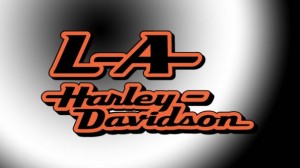Crosswinds
How to deal with them
Sooner or later you are going to wonder about how to handle severe crosswinds – probably while fighting them.
Surprise, surprise – you don’t have to do anything and the motorcycle will handle most crosswinds just fine – with only normal responses from you.
There are a couple of things that you can do to make the experience less stressful, however. For example, you can quit white-knuckling your grips. When you hold on tight you also tend to stiff arm your controls. That, as we’ve talked about before, merely allows front-end instability to propagate into the rest of the motorcycle. Relax your grips and droop your elbows. Allow your bike to be a bit unstable. Drive in the CENTER OF YOUR LANE. Lean forward and down to reduce your profile, and snug up your jacket.
What about traction? You neither gain nor lose any significant traction when the wind blows from your side unless you are in a curve. While you are leaned into the wind all of the weight of the bike remains on your tires (fancy that) and there is very little lateral force scrubbing that traction away.
How much lean do you need? Whatever the bike dials in for you.
Should you anticipate those gusts? Should you just respond quickly to a gust in order to remain in control and traveling in a straight line? No, and no. Your bike will NOT travel in a straight line. That is, as long as you allow it to do its thing, your bike will be modestly blown off course with a gust and the result of that movement is EXACTLY the same as any other minor course change – you will need modest counter-steer input to correct it – the CG of your bike will then be on the side the wind came from and the result is that it will lean towards the wind.
[Anticipating wind-sheer IS important under a couple of scenarios: the approach of an oncoming large vehicle suggests that severe buffeting will occur when you pass it, and entering or exiting stretches protected from the wind such as tunnels or bridges with relatively high retaining walls. In these cases you will certainly want to position the bike away from the source of the wind-sheer and insure you maintain a firm grip.]
Is a heavier bike less likely to be blown around than a lighter bike? Not necessarily. What is primarily determinant of how great the effect of a crosswind is on your bike is its profile. A garage door (GoldWing) will typically be more harshly affected by crosswinds than a lighter low profile bike.
Can you mitigate some of that instability in any way? Yes. There are cowling additions that can be designed (some are available off the shelf – called ‘belly pans’) that streamline the airflow under your bike and help (modestly) to reduce crosswind handling problems.
Your side profile area is what determines how your motorcycle reacts to crosswinds. Just as there is a Center of Gravity, there is also a Center of wind resistance. If that center of wind resistance is in front of your Center of Gravity then crosswinds will tend to push you off course while if it is behind your Center of Gravity the motorcycle will try to steer INTO the wind. Thus, mounting a high profile LIGHT object (a stuffed animal, for example) onto your trunk lid or your pillion can have a dramatically corrective effect rather than worsen the bike’s steering reaction to those crosswinds.
Crosswinds can be murder if you are leaned way over in a curve. Don’t, if you can avoid it.
As a result of a crosswind your bike will move off course and normal modest counter-steer will lean it into the wind. A strong gust will blow you out of track. So, correct your steering, gently, and keep going.
I admit that sometimes a gust can be ferocious! I was on the Golden gate bridge once when a crosswind blew me into the adjacent lane! But the bike was in no danger of falling down and it was easy to get back in lane. Had the gust been a sustained blast I would have been leaned over nearly 45 degrees. It was not, thankfully.
Note … there are TWO times when a gusty crosswind changes your bike’s direction of travel: when it hits, and when it stops. Both require that you allow the bike to respond and use normal modest counter-steering. (When it quits you will be leaned over and, as a result, your bike will move towards where the wind WAS coming from until you straighten it up.
If crosswinds involve huge short gusts, go park the bike. If the crosswinds are more sustained, pucker up and keep going.
By: James R. Davis
[print_link]

